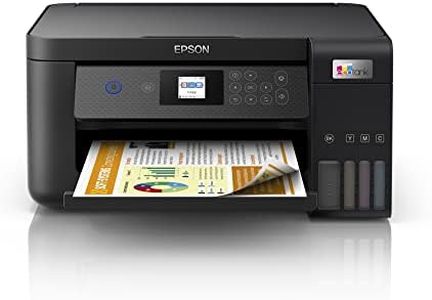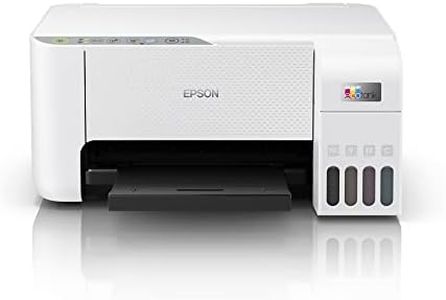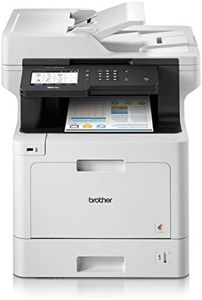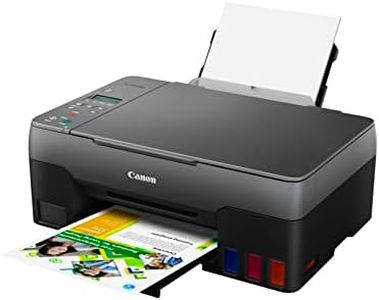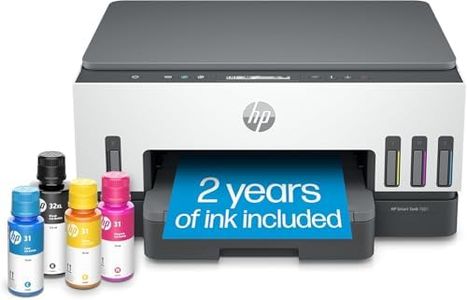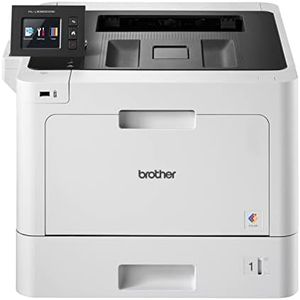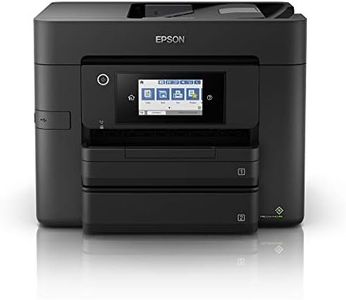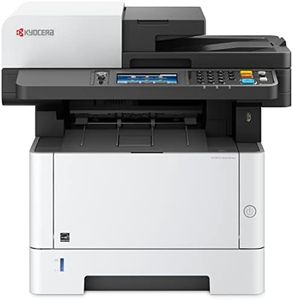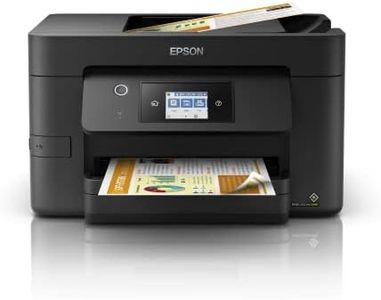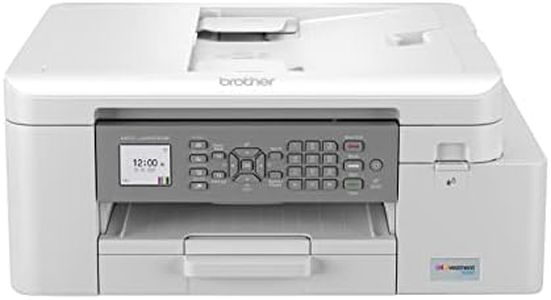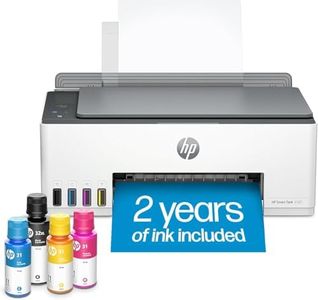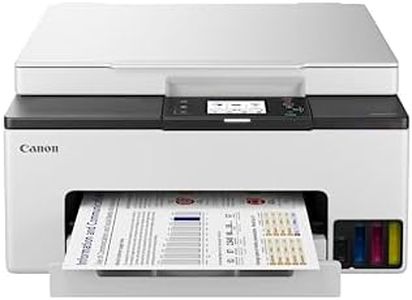We Use CookiesWe use cookies to enhance the security, performance,
functionality and for analytical and promotional activities. By continuing to browse this site you
are agreeing to our privacy policy
10 Best High Volume Printer
From leading brands and best sellers available on the web.Buying Guide for the Best High Volume Printer
Choosing a high-volume printer can feel overwhelming, but with the right approach, you can find a model that fits your needs perfectly. Start by thinking about how often you’ll print, what types of documents you produce, and whether you need color or just black and white. Consider the environment the printer will be used in—home, office, or a shared workspace. Evaluating the key specs will help you match a printer's abilities with your workload, ensuring you end up with a reliable device that meets your expectations.Print Speed (Pages Per Minute, PPM)Print speed, measured in pages per minute (PPM), tells you how quickly the printer can produce documents. This is especially important for high-volume needs, as it determines how fast big print jobs are completed. For light use, speeds under 20 PPM may be sufficient. Moderate users might look for 20–40 PPM, which handles regular document output efficiently. Power users or shared office environments usually benefit from speeds above 40 PPM. To pick the right speed, consider the daily number of pages your workflow demands—frequent, large jobs call for faster printers, while occasional bulk printing can manage with moderate speeds.
Duty CycleThe duty cycle represents the maximum number of pages a printer can handle in a month without risking damage or excessive wear. This number guides you on the printer's durability. Lower-end models might have a duty cycle of a few thousand pages per month, suitable for small offices. Mid-range printers often reach 20,000–50,000 pages, good for busy offices. Heavy-duty machines may exceed 100,000 pages monthly, fit for large organizations or print shops. Match the printer's duty cycle to your anticipated print volume, always opting for a model with a duty cycle comfortably above your actual needs to ensure long-term reliability.
Paper CapacityPaper capacity refers to how many sheets the printer can hold in its input tray. High-volume printers offer larger trays, reducing how often you need to refill them. Small capacity—under 250 sheets—means more frequent refilling, best for light use. Standard printers may hold 250–500 sheets, a good range for moderate offices. Large-capacity trays (over 1,000 sheets) or multiple trays help manage big jobs without interruption. Choose paper capacity based on your typical print job size and how often you want to attend to the printer; larger offices or teams benefit from higher capacities for smoother workflows.
Ink/Toner YieldInk or toner yield describes how many pages you can print with one cartridge or toner before needing a replacement. For high-volume printing, this determines how often you need to buy and replace supplies. Yields can range from a few hundred to tens of thousands of pages. Low-yield options work for minimal printing, while high-yield cartridges mean fewer interruptions and lower per-page costs for heavy users. Match the yield to your print volume, aiming for cartridges that last longer, especially if you print thousands of pages a month.
Connectivity OptionsConnectivity options dictate how you can send print jobs to your printer. High-volume settings often benefit from wired connections (like Ethernet) for stable, fast data transfer in busy networks. Wireless options (Wi-Fi, Bluetooth) offer flexibility and convenience for multiple users or mobile devices. Some printers also support direct USB or cloud printing. Decide what devices will be sending print jobs, whether you need remote access, and if your office setup is better suited to wired or wireless connections.
Printer Type (Laser vs. Inkjet)The main types of high-volume printers are laser and inkjet. Laser printers use toner and are generally faster, with better text quality and lower cost per page—great for document-heavy workloads. Inkjet printers can handle high volume too, especially newer models, and they are better for color images and graphics, but may be slower and less efficient for just black-and-white text. Choose laser if your output is mainly text and speed matters, or specialized inkjets if you often print color images or graphics.
Duplex Printing (Double-Sided Printing)Duplex printing allows a printer to automatically print on both sides of a sheet of paper. This feature is especially useful in high-volume environments to save paper and reduce handling time. Simplex printers (one side only) require manual flipping for double-sided output—less efficient. Duplex models boost productivity and are better for creating booklets or saving storage space. If you routinely print large documents or want to minimize waste, prioritize automatic duplex capability.
Maintenance & Ease of UseMaintenance involves cleaning, troubleshooting, and replacing consumables such as ink, toner, or drums. High-volume printers should be designed for easy, quick maintenance—a straightforward design, easy-access panels, and clear error messages simplify these tasks. Some have self-diagnostics or remote monitoring. Consider how comfortable you are performing basic upkeep; in busy environments, ease of use reduces downtime and keeps workflows uninterrupted.

